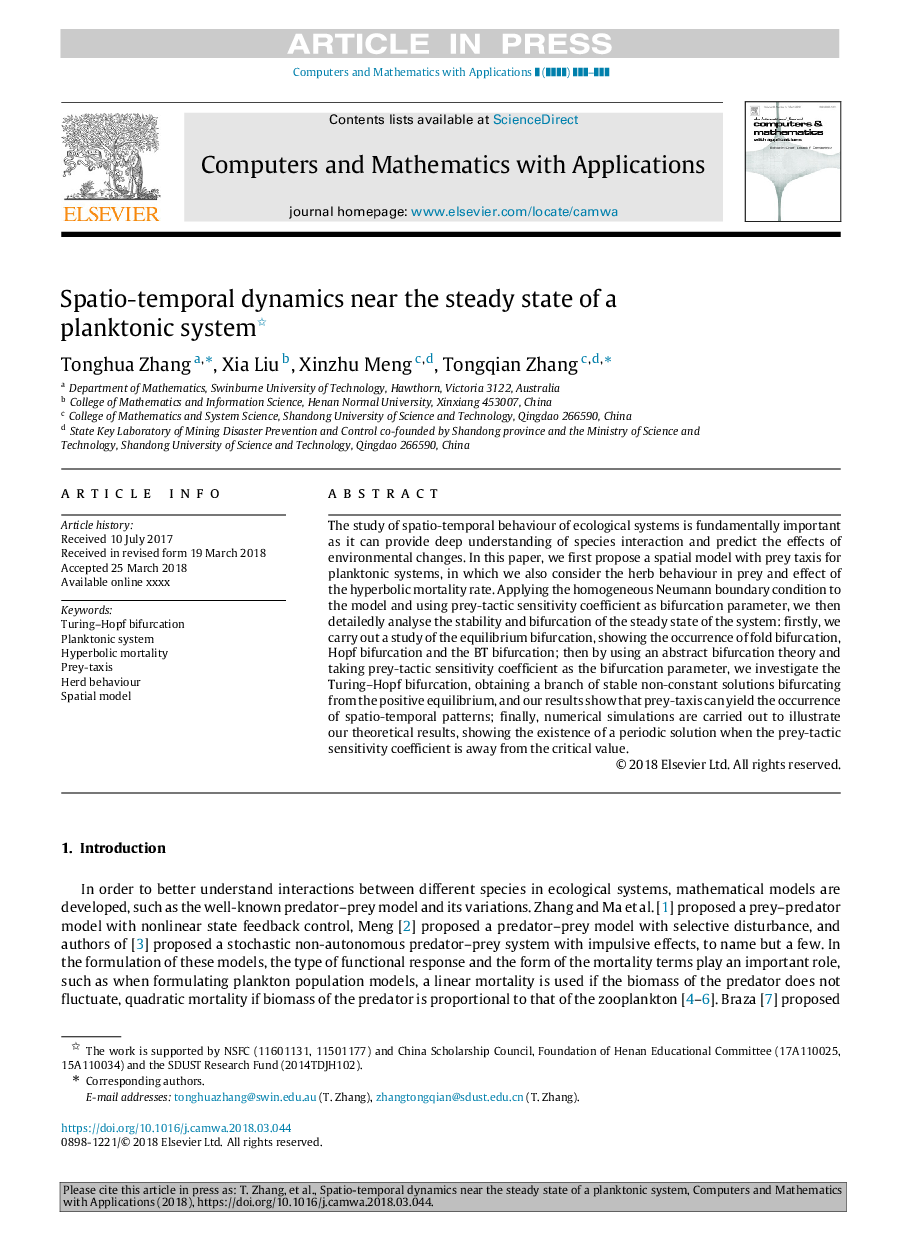| Article ID | Journal | Published Year | Pages | File Type |
|---|---|---|---|---|
| 6891839 | Computers & Mathematics with Applications | 2018 | 15 Pages |
Abstract
The study of spatio-temporal behaviour of ecological systems is fundamentally important as it can provide deep understanding of species interaction and predict the effects of environmental changes. In this paper, we first propose a spatial model with prey taxis for planktonic systems, in which we also consider the herb behaviour in prey and effect of the hyperbolic mortality rate. Applying the homogeneous Neumann boundary condition to the model and using prey-tactic sensitivity coefficient as bifurcation parameter, we then detailedly analyse the stability and bifurcation of the steady state of the system: firstly, we carry out a study of the equilibrium bifurcation, showing the occurrence of fold bifurcation, Hopf bifurcation and the BT bifurcation; then by using an abstract bifurcation theory and taking prey-tactic sensitivity coefficient as the bifurcation parameter, we investigate the Turing-Hopf bifurcation, obtaining a branch of stable non-constant solutions bifurcating from the positive equilibrium, and our results show that prey-taxis can yield the occurrence of spatio-temporal patterns; finally, numerical simulations are carried out to illustrate our theoretical results, showing the existence of a periodic solution when the prey-tactic sensitivity coefficient is away from the critical value.
Related Topics
Physical Sciences and Engineering
Computer Science
Computer Science (General)
Authors
Tonghua Zhang, Xia Liu, Xinzhu Meng, Tongqian Zhang,
